| Sept. 21-25: Measuring Rhythm on a 12-Lead, EKG Interpretation Checklist, Interpretations for Normal Sinus Rhythm (NSR), Sinus Bradycardia, Sinus Tachycarda, Sinus Arrhythmia OBJECTIVES: Be able to correctly do a 12-lead rhythm check Be able to do explain the EKG Rhythm Checklist for an EKG interpretation Be able to identify a Normal Sinus rhythm, Sinus Bradycardia, Sinus Tachycardia and Sinus Arrhythmia Class, Please download the EXAM FIRST. We are working through all Exam questions in the YOUTUBE video lectuers. Click Here to Download Exam 2 Part B due Friday Sept 25 by 12 Midnight CLICK the links below and PRINT these rhythm strips: Click here for the Rhythm Interpretation Checklist YOUTUBE lecture video |
||||||||
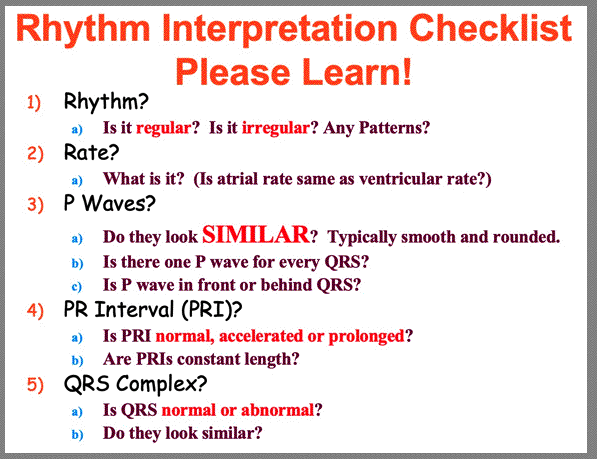 |
||||||||
| After you go through the 5 steps of the Checklist you do your interpretation of the rhythm. | ||||||||
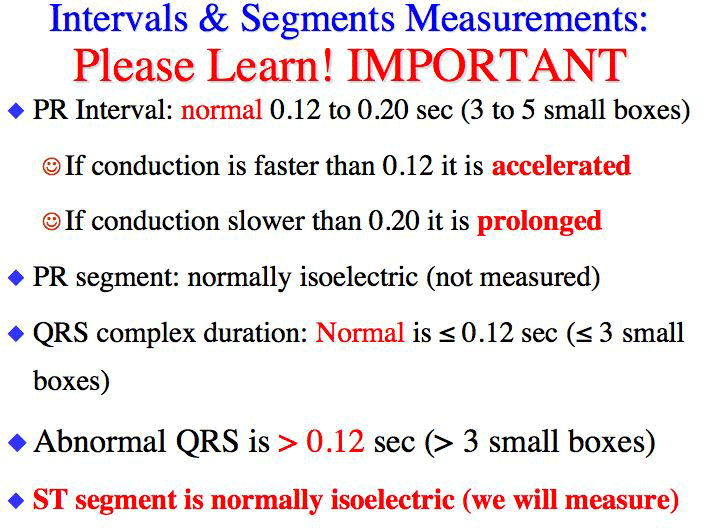 |
||||||||
| Click here for the Normal Sinus Rhythm YOUTUBE lecture video |
||||||||
| There are many EXAM questions in the YOUTUBE videos. Please work through them. | ||||||||
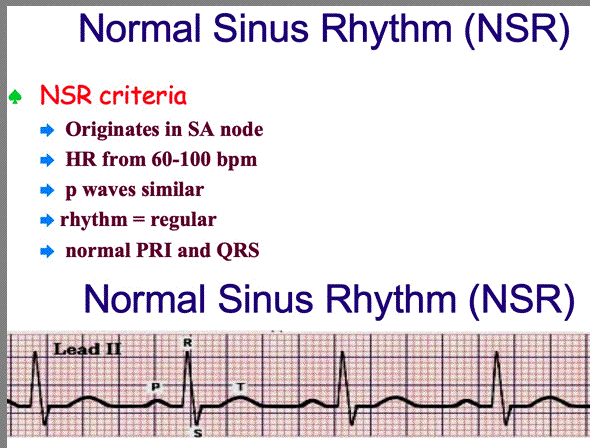 |
||||||||
| Click here for the Sinus Rhythms One YOUTUBE lecture video |
||||||||
| So I can LASER Focus your energy and thought, I divided the Sinus Rhythms into Sinus Rhythms One and Sinus Rhytms Two. Questions for Exam are provided in each video. | ||||||||
| Click here for the Sinus Rhythms Two YOUTUBE lecture video |
||||||||
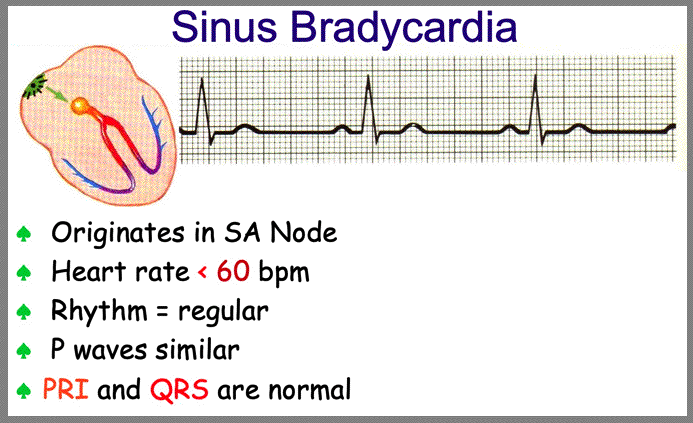 |
||||||||
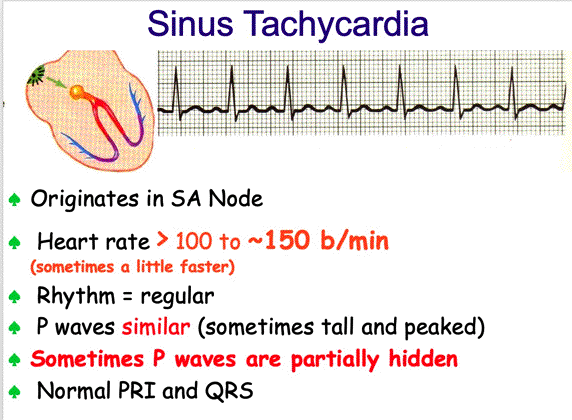 |
||||||||
| Sometimes the Sinus tachycardia rhythm is so fast the P waves are partially hidden in the T waves. This only happens with a Sinus tachycardia. When the P waves are partially hidden, the PRI is indeterminate. See Below. | ||||||||
 |
||||||||
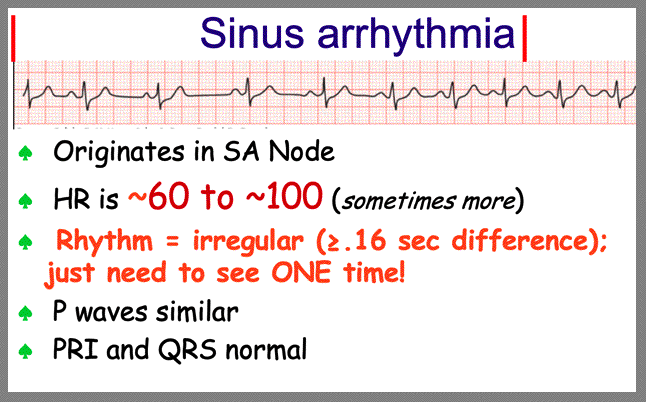 |
||||||||
| Review: How to do the PRI and QRS Measurements with a 'Flat' S wave | ||||||||
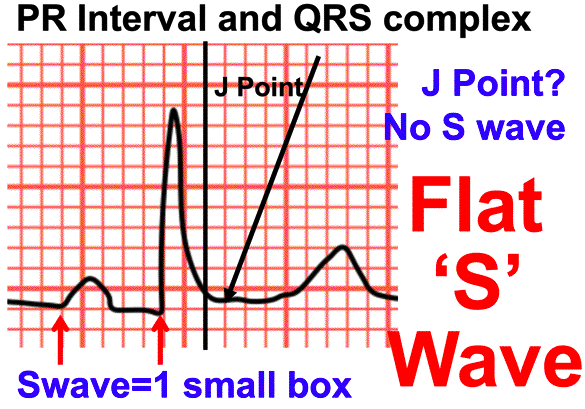 |
||||||||
| In the PRI above there is no Q wave so going from the inflection of the Pwave to inflection of the Rwave you get a PRI of 5 small boxes (.2 seconds) = normal | ||||||||
| The Flat 'S' wave poses a real challenge. Here are the steps: | ||||||||
| 1) Follow the Rwave until it reaches isoelectric or (as above) it starts to go toward the Twave | ||||||||
| 2) Mark the point where the Rwave begins to go towards the Twave | ||||||||
| 3) Move over 1 small box from your mark; that is the J point | ||||||||
| 4) You can now measure the QRS; for the above it is 3 small boxes (.12 seconds) = normal | ||||||||
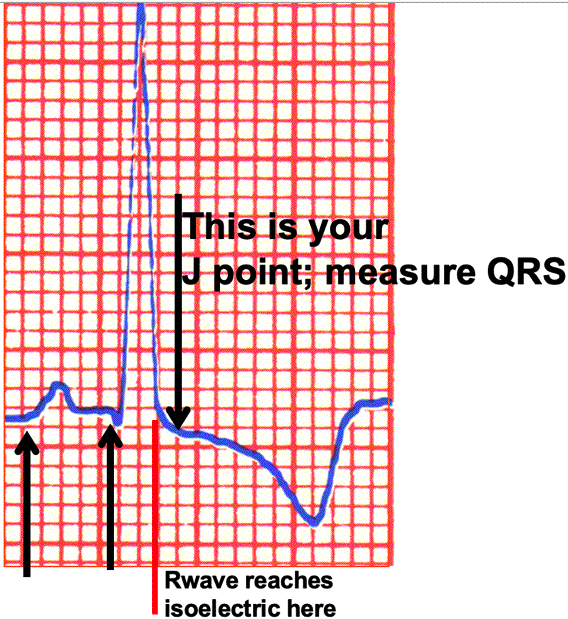 |
||||||||
| The PRI above is 4.5 small boxes (.18 seconds) = normal | ||||||||
| The Swave is not present due to the inverted Twave. Use the same technique as with the Flat 'S' Wave | ||||||||
| 1) Follow the Rwave until it reaches isoelectric: I have marked it with the red line | ||||||||
| 2) Move over 1 small box from where the Rwave reaches isoelectric: that is your J point | ||||||||
| 3) You can now measure the QRS; for the above it is 3 small boxes (.12 seconds) = normal | ||||||||
| Exam 2 Part B: Click here to get questions: Exam is due by 12midnight on Sept 25. No late papers accepted. | ||||||||
|